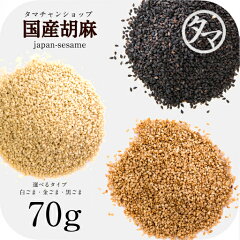Japanese page
Nutrient content per 100 g
Delicious season
Sesame
| ① | ② | ③ | ④ | ⑤ | ⑥ | ⑦ | ⑧ | ⑨ | ⑩ | ⑪ | ⑫ |
|---|
* Display the yearly calendar with each number
Commentary on vegetables
- There are 4 types of white sesame, black sesame, gold sesame and tea sesame
- 99% of sesame in Japan is imported
- Health foods rich in vitamins E, B, calcium and minerals
- 55% of ingredients are lipids
- Expected effects such as prevention of aging, improvement of liver function, prevention of arteriosclerosis
- When stir fry, fry over high heat (be careful because it is easy to burn)
White sesame=seeds are produced all over the world. Become a raw material for sesame oil
Black sesame = mainly from Southeast Asia. High percentage of seed coat, hard skin
Gold sesame / tea sesame = rich and fragrant. Expensive and often used in kaiseki cuisine
Good things to eat together
- Aging prevention = Squash, broccoli, Sweet potato
- Healthy brain effect = milk, kelp, agar
- Prevention of constipation = Wakame, Butterbur, Jew’s mallow
- Healthy brain effect =bluefin tuna, Sardine, bonito,salmon
Preservation method
- Avoid hot and humid
- Store in a dry place as it is not good at moisture.
- Room temperature is acceptable in winter, but if possible, store in refrigerator in summer
(Put out only what you use from the refrigerator.)
recipe
- Sesame sauce
- Sesame tofu
- Sesame dressing
- Rikyu
Food composition table
Per 100g edible portion
Sesame(Roast)
| Waste rate | 0% |
| Energy | 599㎉ |
| moisture | 1.6g |
| Protein | 20.3g |
| Lipid | 54.2g |
| Carbohydrate | 18.5g |
| Sodium | 2㎎ |
| Potassium | 410㎎ |
| Calcium | 1200㎎ |
| Magnesium | 360㎎ |
| Rin | 560㎎ |
| iron | 9.9㎎ |
| Zinc | 5.9㎎ |
| Copper | 1.68㎎ |
| Manganese | 2.52㎎ |
| Lodine | – |
| Selenium | 27㎍ |
| Chromium | 4㎍ |
| Molybdenum | 110㎍ |
| Vitamin A(Retinol) | – |
| Vitamin A(β-carotene) | 7㎍ |
| Vitamin D | – |
| Vitamin E(Tocopherol α) | 0.1㎎ |
| Vitamin K | 12㎍ |
| Vitamin B1 | 0.49㎎ |
| Vitamin B2 | 0.23㎎ |
| Niacin | 5.3㎎ |
| Vitamin B6 | 0.64㎎ |
| Vitamin B12 | – |
| Folic acid | 150㎍ |
| Pantothenic acid | 0.51㎎ |
| Biotin | 14.8㎍ |
| Vitamin C | – |
| Dietary fiber(aggregate amount) | 12.6g |
Quoted from the Japanese food standard composition table 2015 edition

